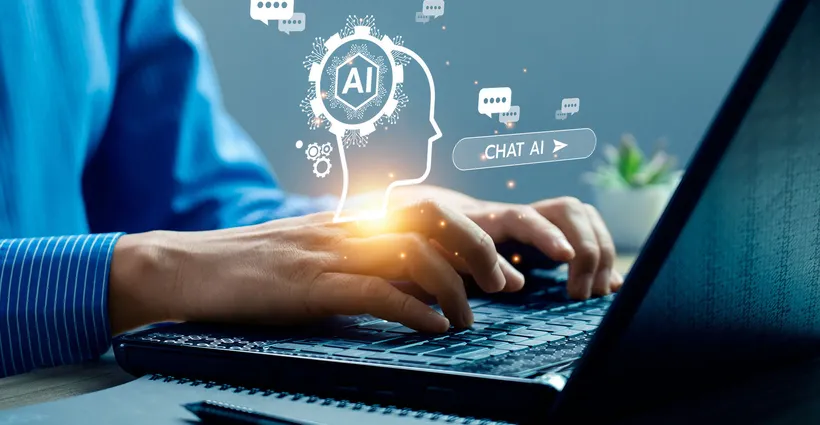Enhance Safety with AI: Predict, Prevent, Protect

Imagine a workplace where incidents are predicted and prevented before they happen. This is the reality that AI brings to workplace safety. This article explores how AI can transform how we approach safety by analyzing patterns, identifying potential hazards, and significantly reducing workplace incidents.
Understanding Predictive Safety
Predictive safety involves using AI to forecast and mitigate potential workplace risks. By analyzing vast amounts of data, AI identifies trends humans might miss, providing early warnings about possible hazards. For example, in a manufacturing plant, AI might detect a pattern where machine overheating precedes malfunctions that cause injuries. This early detection allows maintenance teams to intervene before an incident occurs.
Understanding how predictive safety works requires looking at its essential elements:
- Data Collection: Gathering data from various sources like incident reports, safety audits, and equipment sensors. For example, sensors on construction equipment can collect data on usage and stress levels to predict potential failures.
- Pattern Analysis: Using AI to identify patterns and trends in the data. Analyzing data from wearables can reveal patterns in worker movements that indicate unsafe practices or areas where ergonomic improvements are needed.
- Hazard Identification: Pinpointing potential hazards before they cause harm. AI can highlight areas in a warehouse where accidents frequently happen, allowing for targeted interventions such as additional training or layout changes.
Now that we've outlined the basics of predictive safety, let's explore how AI enhances these capabilities.
How AI Enhances Predictive Safety
To truly understand the power of AI in workplace safety, we need to explore how it enhances predictive safety measures. By leveraging advanced technologies, AI transforms raw data into actionable insights that can prevent incidents before they occur.
- Data Analysis: AI can sift through historical data, spotting trends and patterns that indicate potential risks. This helps in understanding what factors lead to incidents and how to avoid them. For example, analyzing past incident reports in a chemical plant might show that certain chemical combinations have led to near-misses, prompting changes in handling procedures.
- Real-time Monitoring: AI systems monitor workplace conditions in real-time. Sensors and cameras feed data into the AI, which then analyzes it to detect any immediate threats. In a mining operation, real-time monitoring of equipment vibrations and temperatures can alert workers to potential machinery failures, preventing accidents.
- Predictive Algorithms: Machine learning algorithms predict potential incidents by learning from past data. They provide alerts about high-risk situations, allowing proactive measures. For instance, in the oil and gas industry, predictive algorithms can foresee pipeline leaks based on pressure and flow data, enabling early repairs and preventing environmental hazards.
These enhancements not only improve immediate responses but also contribute to a broader set of benefits for workplace safety.
Benefits of AI-Driven Predictive Safety
AI-driven predictive safety systems offer a wide range of benefits that extend beyond immediate incident prevention. By integrating AI into safety protocols, companies can achieve long-term improvements in workplace safety and efficiency.
- Incident Reduction: AI-driven safety systems help decrease workplace accidents and near-misses, creating a safer environment for employees. For example, in the construction industry, AI can predict scaffold collapses by analyzing data from structural sensors, preventing potentially fatal accidents.
- Improved Decision-Making: With better insights from AI, safety managers can make informed decisions quickly. This leads to more effective safety strategies and policies. In the healthcare sector, AI might analyze patient handling data to recommend best practices that reduce caregiver injuries.
- Cost Savings: Reducing workplace injuries lowers the costs associated with medical expenses, compensation claims, and regulatory fines. For instance, a manufacturing company might save millions annually by using AI to predict and prevent machine-related injuries, thereby avoiding costly downtime and worker compensation claims.
- Enhanced Safety Culture: AI promotes a proactive approach to safety, encouraging employees to be more vigilant and engaged in safety practices. When workers see that their company invests in advanced safety measures, it boosts morale and fosters a culture of care and responsibility. For example, regular AI-driven safety updates can keep employees informed and involved in safety initiatives, enhancing overall workplace safety culture.
As we can see, the benefits of integrating AI into workplace safety are significant and far-reaching. However, addressing the challenges is crucial for realizing these benefits.

Challenges and Considerations
While the benefits are compelling, there are also challenges to consider when implementing AI-driven predictive safety.
- Data Quality and Quantity: AI requires accurate and sufficient data for effective analysis. Ensuring high-quality data collection is essential. For example, in the construction industry, data from equipment sensors and worker safety reports must be accurate and comprehensive. Inconsistent or incomplete data can lead to faulty predictions, potentially putting workers at risk.
- Integration with Existing Systems: Current safety management systems often face compatibility issues with new AI tools. Without seamless integration, functionality can suffer, leading to disjointed safety data and monitoring.
- Employee Training and Acceptance: Training staff to use AI tools is crucial. Fostering acceptance among employees can be a challenge but is necessary for successful implementation. Workers might feel apprehensive about new technology, fearing it could replace their roles or add to their workload.
Addressing these challenges is crucial for successful AI implementation. Let's explore how one company's cutting-edge solutions support this process.
HSI's AI-Driven EHS Solutions
HSI addresses the critical challenges of implementing AI-driven predictive safety with a robust, cloud-based platform designed for comprehensive safety management. This includes centralized incident management, chemical management, and compliance tracking for easier access and reporting.
- Ensuring Data Quality through System Integration: HSI ensures high-quality data collection by integrating seamlessly with existing safety management systems. This integration allows for cohesive monitoring and management of safety data, reducing manual entry errors and ensuring all safety data is up-to-date and accessible. In addition, all safety-related data is centralized, providing a holistic view of workplace safety and enabling better decision-making.
- Simplifying Employee Training and Fostering Acceptance: HSI recognizes the importance of employee training and acceptance. Their user-friendly interface and comprehensive training resources help employees quickly adapt to new AI tools. Emphasizing AI as a tool to enhance, not replace, human efforts helps alleviate concerns and encourages a supportive attitude toward new technology.
Harnessing AI for predictive safety significantly reduces workplace incidents. AI-driven systems provide better insights, improve decision-making, and foster a proactive safety culture. HSI's AI-enhanced EHS software helps organizations implement these solutions effectively, addressing key challenges such as data quality, integration, employee training, and privacy concerns.
To explore how HSI can enhance your safety management efforts, discover our comprehensive safety solutions. By leveraging advanced AI technologies, companies can create safer, more efficient work environments, ultimately protecting their most valuable asset: their employees.


